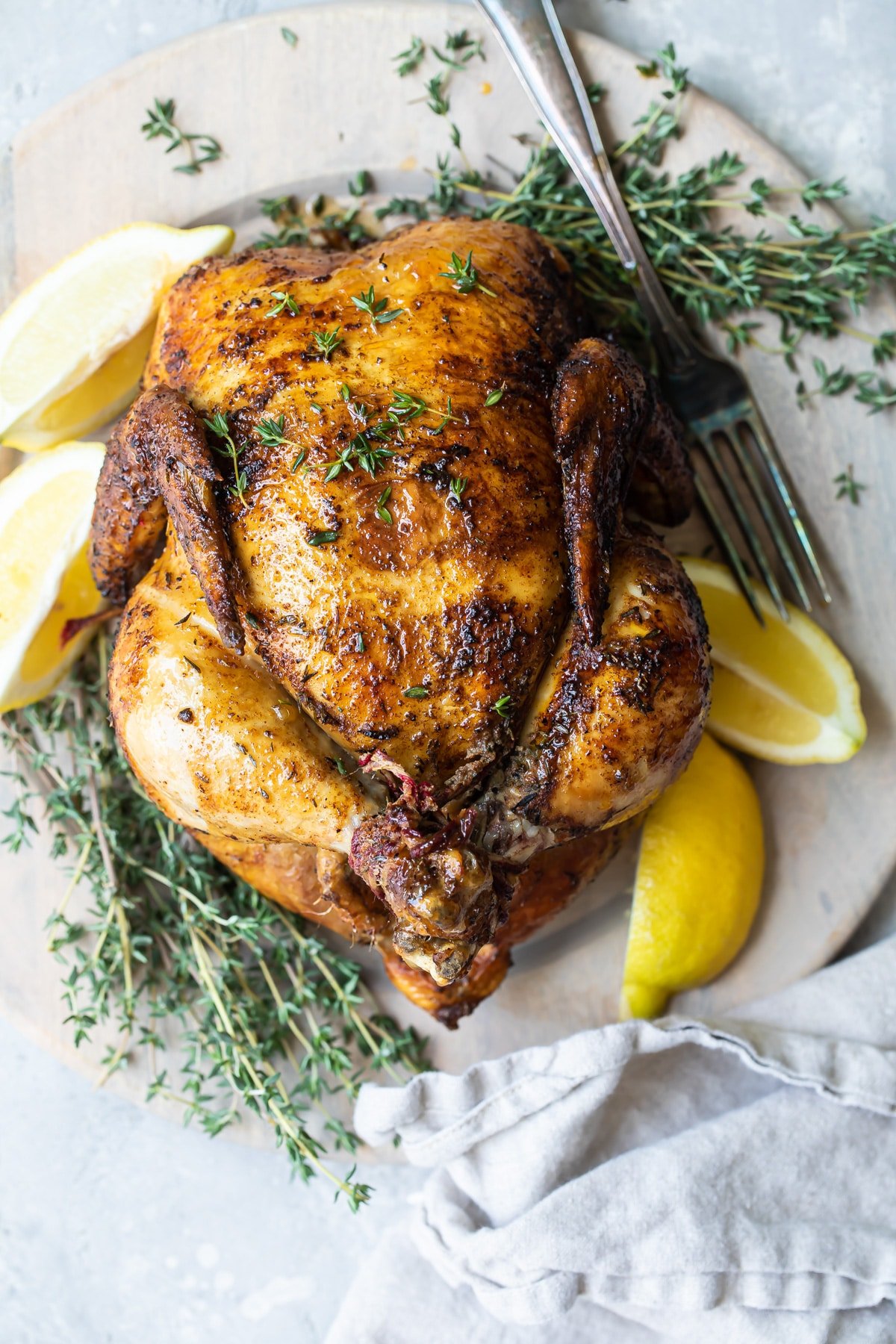You might wonder, “Why is rotisserie chicken called rotisserie?” The answer lies in the cooking method itself. Rotisserie chicken gets its name from the rotisserie, a device that has been used for centuries to cook food. The rotisserie, which means “to roast” in French, involves rotating the chicken over a direct heat source, whether it’s an open fire or modern heating elements. This constant rotation ensures even cooking, resulting in the crispy skin and juicy meat we all crave.
The Etymology of Rotisserie: Why Is Rotisserie Chicken Called Rotisserie?
The name “rotisserie chicken” is a direct reflection of its cooking method. The word “rotisserie” itself comes from the French word “rôtir,” meaning “to roast.” This emphasizes the core principle of the rotisserie, which is the act of roasting food over a heat source, traditionally an open fire. The French connection to the word “rotisserie” hints at its deep historical roots, as France has a long tradition of culinary excellence.
Why Is Rotisserie Chicken Called Rotisserie? A Culinary Etymology
The term “rotisserie” is deeply rooted in the culinary history of the world, providing a fascinating glimpse into the evolution of cooking techniques. The word itself is derived from the French verb “rôtir,” meaning “to roast.” This connection highlights the fundamental principle behind the rotisserie: using heat to cook food, specifically through a rotating method. The rotisserie, therefore, is not simply a cooking device, but rather a testament to the ingenuity of our ancestors in finding innovative ways to transform raw ingredients into delectable meals.
The etymology of “rotisserie” offers several key insights into its history:
- Centuries of Tradition: The French origin of the word points to a long history of using rotisseries in Europe, dating back to medieval times. The rotisserie, as a cooking method, has been employed for centuries, showcasing its enduring relevance in kitchens across the world.
- From Fire to Modern Technology: The word “rôtir” also highlights the origins of rotisseries: using open fires. Over time, the technology of rotisseries evolved, incorporating innovations like mechanical rotation and modern heating elements. This evolution reflects the ongoing quest for efficient and effective cooking methods, while still retaining the essence of traditional techniques.
- A Global Culinary Heritage: While the French term is prevalent, rotisseries have been employed globally, adopting various forms and names. This widespread adoption underscores the fundamental importance of the rotisserie as a versatile and effective cooking method.
Delving Deeper into the Culinary History of Rotisserie Chicken
The rotisserie’s invention revolutionized cooking. Before its arrival, meats were often roasted over an open fire, leading to uneven cooking and potential burning. The rotisserie, with its constant rotation, ensured that all sides of the food received equal heat exposure. This innovation significantly improved the quality of roasted meats and paved the way for the development of more sophisticated cooking methods. This constant rotation, a key feature of the rotisserie, is responsible for the characteristic crispy skin and juicy meat that we love. In the history of cooking, the rotisserie’s impact is undeniable, allowing for a more even and efficient way to prepare meat.
| Feature | Description |
|---|---|
| Before Rotisserie | Meats were roasted over open fires, resulting in uneven cooking and burning. |
| Rotisserie Invention | Constant rotation ensured even heat distribution, leading to improved cooking quality. |
| Benefits of Rotisserie | Crispy skin and juicy meat due to constant rotation. |
| Impact on Cooking | Revolutionized cooking by providing a more efficient and even way to prepare meat. |
The Etymology of Rotisserie: Understanding the Word’s Origins
To understand the term “rotisserie,” we need to delve into its linguistic roots. The word “rotisserie” itself stems from the French word “rôtir,” meaning “to roast.” This connection is crucial because it highlights the fundamental concept behind the rotisserie – the process of cooking food by rotating it over a heat source. The act of rotating the food ensures even cooking, leading to the characteristic crispy skin and juicy meat we associate with rotisserie chicken.
Why is rotisserie chicken called rotisserie? Conclusion
The next time you enjoy a succulent rotisserie chicken, take a moment to appreciate the centuries-old tradition behind its preparation. The word “rotisserie” is a testament to the ingenuity of our culinary ancestors, who sought a more efficient and even way to cook meat. This rotating method, with its roots in open fires and its evolution to modern technology, continues to produce the crispy skin and juicy meat that we all love.
So, why is rotisserie chicken called rotisserie? The answer lies in the heart of the cooking method itself. The rotisserie, with its rotating action, allows for even cooking and produces that signature crispy skin and juicy meat. It’s a cooking technique that has stood the test of time, proving its effectiveness and deliciousness for generations.
Why is rotisserie chicken called rotisserie? Quick FAQ
What exactly is a rotisserie?
A rotisserie is a cooking device that rotates food over a heat source, traditionally an open fire or, in modern times, electric or gas-powered heating elements. This constant rotation ensures even cooking, resulting in the characteristic crispy skin and juicy meat we all crave.
Why is rotisserie chicken so popular?
Rotisserie chicken is popular for several reasons. It’s simple to prepare, requiring minimal effort. The constant rotation ensures even cooking, leading to juicy meat and crispy skin. It’s also a versatile dish that can be served in various ways, making it a favorite for both casual and formal meals.
Is rotisserie chicken healthy?
Rotisserie chicken can be a healthy option, especially when compared to fried chicken. It’s a good source of protein and contains fewer calories than fried alternatives. However, some rotisserie chickens may contain high amounts of sodium due to marinades or seasonings. It’s important to choose rotisserie chicken with minimal added salt or seasonings.

